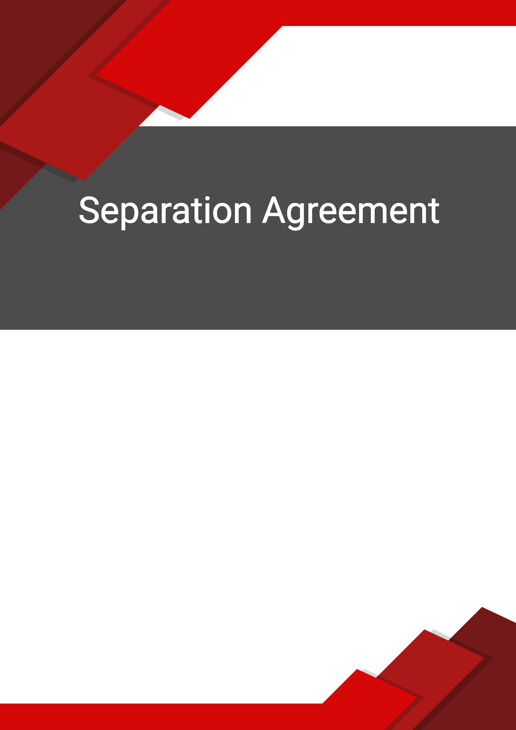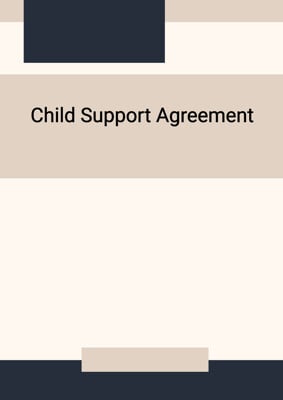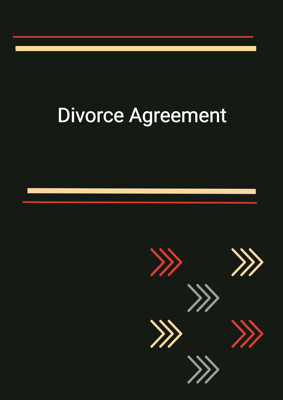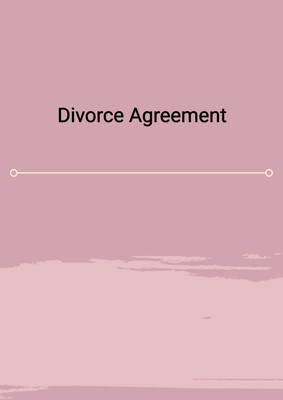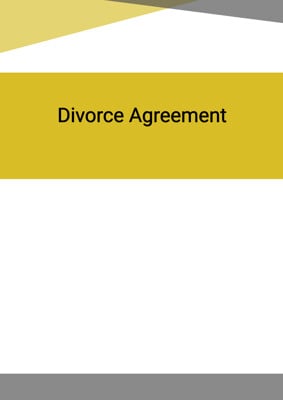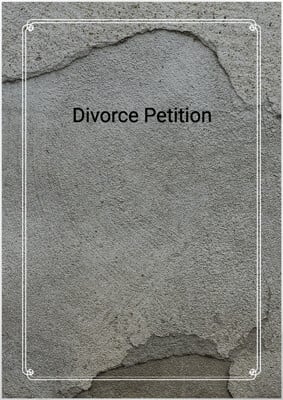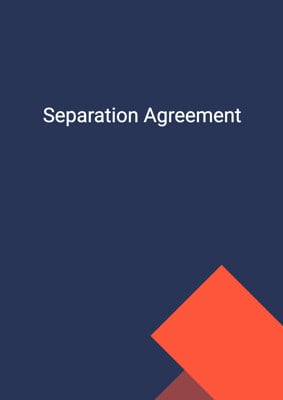How to Tailor the Document for Your Need?
01
Create Document
Fill in the details of the parties. You can click the "Fill with Member’s Information" button to complete it with information saved to your account.
02
Fill Information
Please fill in any additional information by following the step-by-step guide on the left hand side of the preview document and click the "Next" button.
03
Get Document
When you are done, click the "Get Document" button and you can download the document in Word or PDF format.
04
Review Document
Please get all parties to review the document carefully and make any final modifications to ensure that the details are correct before signing the document.
Document Preview
Document Description
The Separation Agreement is a legally binding document that outlines the terms and conditions of the separation between the husband and wife. It is important because it provides a clear and comprehensive framework for both parties to follow during the separation process.
The document begins with a background section, which states the date of the marriage and the cohabitation address. It also acknowledges that the marriage has broken down irretrievably and that the parties wish to separate. The agreement covers various aspects such as property division, child custody, child support, spouse maintenance, and other general obligations.
Section 1 of the agreement deals with the separation itself. It states that the parties will separate on a specific date with the intention to live separate and apart from each other. It also specifies that neither party will enter the other's living space or work without invitation or approval.
Section 2 focuses on child custody. It confirms that the parties are the parents of one minor child and provides the child's name, date of birth, and address. It also states that the terms relating to child custody, including visitation rights, are set out in Schedule 1.
Section 3 addresses child support. It states that the husband will pay a specific amount of child support per month directly to the wife. It also specifies that the husband will be responsible for medical and dental insurance for the child, as well as other reasonable expenses related to the child's schooling.
Section 4 covers spouse maintenance. It states that the husband will pay nominal maintenance to the wife at a specific rate per annum during the joint lives of the parties or until the wife's remarriage.
Section 5 deals with the transfer of cohabitation property. It states that if the husband owns any share or interest in the matrimonial home, it shall be transferred to the wife. It also specifies that the wife shall assume all liabilities and indemnify the husband against any expenses related to the transfer and subsequent repair and maintenance of the cohabitation property.
Section 6 clarifies that all pre-marital and post-marital property, except for the cohabitation property, shall be regarded as each party's separate property.
Section 7 outlines general obligations. It states that each party shall be solely liable for any debts and civil or criminal liabilities in their sole name and shall indemnify the other party from any claims or actions arising from the same.
Section 8 includes undertakings from each party to accept the financial provision set out in the agreement and to waive all claims against the other party.
Section 9 acknowledges that the parties have sought independent legal advice and fully understand the nature and effect of the agreement.
Section 10 confirms that the parties have made full and frank disclosure of their means and resources.
Section 11 contains general provisions, including the fairness and validity of the agreement, its non-consent to divorce or dissolution of marriage, and its potential incorporation into a judgment or decree.
Section 12 states that no amendment or variation of the agreement is valid unless recorded in a supplemental deed signed by each party.
Section 13 specifies that the agreement constitutes the entire agreement between the parties and supersedes any previous agreements or arrangements.
Section 14 states that the agreement is governed by the laws of the jurisdiction state and that each party submits to the non-exclusive jurisdiction of the courts of the jurisdiction state.
How to use this document?
1. Prepare for separation: Choose a specific date for the separation and ensure that both parties are aware of the intention to live separate and apart from each other. Discuss and agree on boundaries regarding entering each other's living space or work.
2. Determine child custody: Identify the minor child and confirm that no other child has been born during the marriage. Refer to Schedule 1 for the terms of child custody, including legal custody, physical custody, visitation rights, and holiday arrangements.
3. Establish child support: Determine the amount of child support to be paid by the husband to the wife per month. Clarify the husband's responsibility for medical and dental insurance and other reasonable expenses related to the child's schooling.
4. Address spouse maintenance: Agree on the rate of nominal maintenance to be paid by the husband to the wife per annum. Specify that the first payment will be made upon the final approval of the court on the divorce application.
5. Transfer cohabitation property: If the husband owns any share or interest in the matrimonial home, arrange for its transfer to the wife. Clarify the husband's obligations and the wife's entitlement to the cohabitation property. Jointly continue paying government rates and water rates until the completion of the transfer.
6. Determine separate property: Acknowledge that all pre-marital and post-marital property, except for the cohabitation property, shall be regarded as each party's separate property.
7. Fulfill general obligations: Each party should be solely liable for their debts and civil or criminal liabilities. Indemnify the other party against any claims or actions arising from the same.
8. Accept the agreement: Both parties should accept the financial provision set out in the agreement and waive all claims against each other, except to enforce the agreement.
9. Seek independent legal advice: Ensure that both parties have sought independent legal advice and fully understand the nature and effect of the agreement.
10. Make full disclosure: Confirm that both parties have made full and frank disclosure of their means and resources.
11. Understand general provisions: Familiarize yourself with the general provisions, including the fairness and validity of the agreement, its non-consent to divorce or dissolution of marriage, and its potential incorporation into a judgment or decree.
12. Amendment process: Note that any amendment or variation of the agreement must be recorded in a supplemental deed signed by both parties.
13. Entire agreement: Understand that the agreement constitutes the entire agreement between the parties and supersedes any previous agreements or arrangements.
14. Follow governing law: Recognize that the agreement is governed by the laws of the jurisdiction state and that both parties submit to the non-exclusive jurisdiction of the courts of the jurisdiction state.
Not the right document?
Don’t worry, we have thousands of documents for you to choose from:
